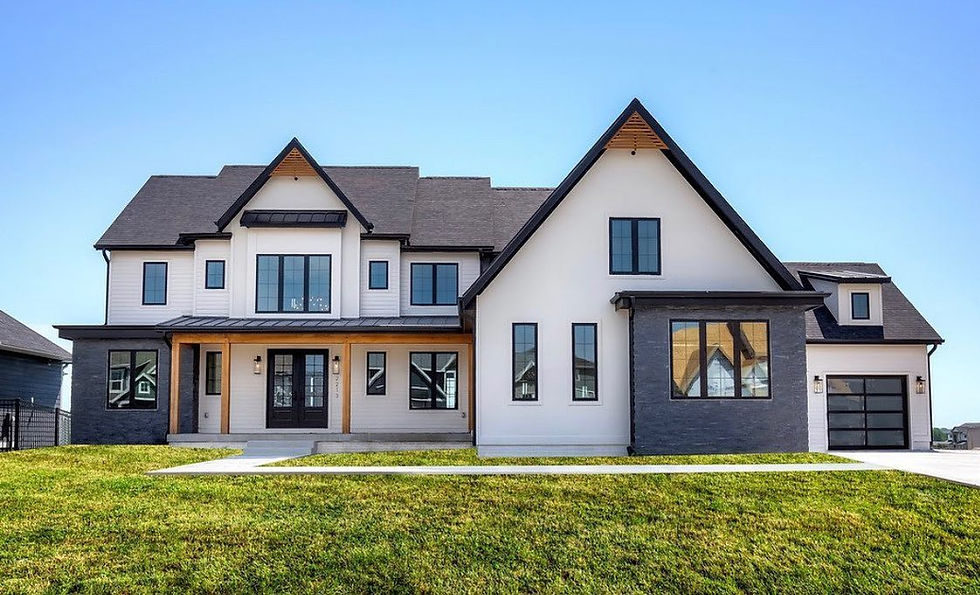Western Suburbs Housing Market Outlook: Why Spring 2026 Could Be the Turning Point
- Jake Kilts
- Oct 20
- 3 min read
As 2026 approaches, optimism is returning to the housing market — and the western suburbs of Chicago may be among the first to feel it. After two years of sluggish activity caused by high mortgage rates and limited affordability, local conditions are showing early signs of improvement. Here’s what that means for homeowners, buyers, and sellers across DuPage, Kane, and western Cook Counties.

📊 Current Market Snapshot
Prices: Home prices in Illinois have risen roughly 3–4% year-over-year, with the median home value just above $300,000. In the western suburbs, towns like West Chicago, Wheaton, and Downers Grove are tracking similarly.
Inventory: Supply remains tight at about three months — not enough to satisfy steady buyer demand.
Local examples: In communities such as Woodridge and Elmhurst, detached home sales have doubled year-over-year, signaling momentum heading into the next cycle.
🏡 Why Spring 2026 Looks Promising
1. Lower mortgage rates on the horizonEconomists expect 30-year mortgage rates to dip closer to 6% by mid-2026. Even a small decline can bring thousands of buyers back into the market — particularly those who have been waiting for rates to fall below 7%.
2. Pent-up demand is buildingMany would-be movers in the suburbs have stayed put since 2022 to keep their low interest rates. When borrowing costs improve, some will finally make a move — freeing up listings and increasing transaction volume.
3. Lifestyle migration continuesThe western suburbs still offer what today’s buyers want: good schools, family-friendly neighborhoods, and more space than city living allows. Suburbs with commuter-train access like Lisle, Wheaton, and Naperville continue to draw professionals who want balance between proximity and privacy.
4. Value migration within ChicagolandAs prices in closer-in neighborhoods and northern suburbs remain steep, more buyers are shifting westward in search of better value. Areas such as West Chicago and Carol Stream provide similar amenities at lower price points — a trend likely to continue through 2026.
⚠️ What Could Slow the Rebound
Mortgage rates staying above 7% longer than expected.
Local tax or insurance cost increases that squeeze affordability.
Economic slowdowns that weaken job security.
Oversupply of lower-quality homes entering the market simultaneously.
💡 Advice for Buyers and Sellers
For Buyers:
Start preparing early — pre-approval and saved down payments will position you well when competition increases in spring.
Consider “value suburbs” that have access to top schools but are still more affordable than the Naperville-Elmhurst tier.
Don’t expect major price drops; moderate appreciation is more likely.
For Sellers:
Use the coming winter months to prepare — make updates, declutter, and line up photography before March.
Price realistically and emphasize lifestyle: proximity to schools, parks, and commuter routes are still key selling points.
Be ready for motivated buyers once rates ease — quality listings will move quickly.
🧭 The Takeaway
While no one expects a dramatic boom, the western suburbs of Chicago are primed for a steady, healthy pickup in Spring 2026. Inventory remains tight, demand is waiting to be released, and mortgage rates are trending lower. For families considering a move, the next spring market could be the most balanced and active since before the pandemic.

Jake Kilts is a top-ranked REALTOR® serving Illinois’ western suburbs. Known for his honest advice and proven results, Jake helps buyers and sellers navigate the market with confidence — from first-time homes to multi-million-dollar properties.




Comments